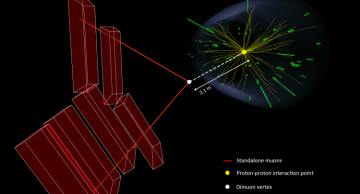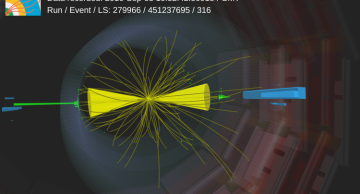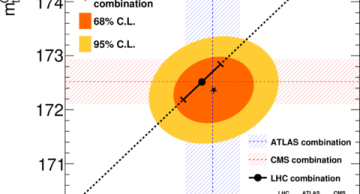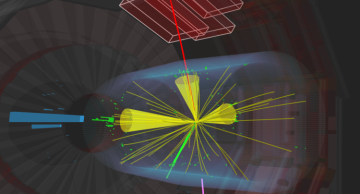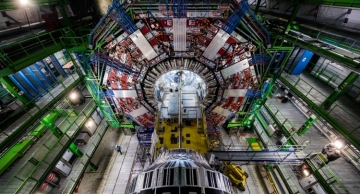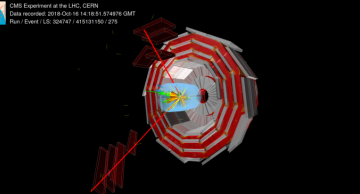Two key properties of neutrinos in the standard model of particle physics (SM) are that they are massless and “left-handed”, i.e. their spin is always opposite to their momentum. The observation of neutrino oscillations posed a big challenge to the…
News
|
ldelpian |
Physics
The first search for new physics using LHC data collected in Run 3 has been presented by CMS. It was shown during this year’s EPS conference in Hamburg and relied on both the new data and refinements of the trigger system made for Run 3. It marks…
|
ajafari |
Physics
At the subatomic level, interactions between particles are mediated through the exchange of special particles, the force carriers. In the case of electromagnetism, the force is transmitted by photons. They connect particles with electric charge (…
|
ajafari |
Physics
It is easy to recognize your friends in a street if they are standing or walking, but what if they are riding a supercar at a speed of 150 km per hour? In the Large Hadron Collider, if the energy of two partons from two colliding protons is about…
|
ajafari |
Physics
Among all the elementary particles, quarks and gluons (partons) are the only ones that cannot be observed in isolation. In high-energy collisions, such as those occurring at the Large Hadron Collider (LHC), partons undergo a few stages between their…
|
sohurst |
Physics
The ATLAS and CMS Experiments at CERN have just released a new measurement of the mass of the top quark. The new result combines 15 previous measurements to give the most precise determination of the top-quark mass to date.
Among the known…
|
ajafari |
Physics
A new search conducted by the CMS collaboration is exploring Higgs bosons with very high energy. Measuring how many high-energy Higgs bosons are created in proton-proton collisions can tell us about new Higgs interactions, either with known…
|
ajafari |
Physics
Very quickly after quarks are produced in proton-proton collisions, they radiate gluons (the mediators of the strong force between quarks) that in turn produce more particles that radiate gluons. This creates an avalanche of particles in the…
|
ajafari |
Physics
Peter Higgs and François Englert received the Nobel Prize in Physics after the 2012 discovery of the Higgs boson with a mass of 125 GeV. Its existence provided experimental evidence of the predicted ‘Higgs field’ that pervades the universe and…
|
ajafari |
Physics
Most searches for new physics beyond the standard model (SM) focus on particles that decay almost instantly after being produced. However, many theories predict particles that travel a long distance, even up to meters, before decaying. Observing…
|
ajafari |
Physics
We have this idea that we communicate best within our own generation, but is this true? Who is to say that a second-generation lepton and a third-generation quark have nothing in common? Many observed phenomena in particle physics are conspicuously…
|
ajafari |
Physics
The CMS experiment at the LHC is set to explore the fundamental nature of our universe. It allows scientists to study particles, their interactions, and the forces that shape our world. Through these studies, a deeper understanding of the building…


